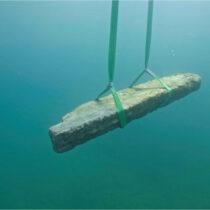The model of the traditional “man as hunter” and that of the woman who is defined only by her ability for reproduction, reflect the androcratic concept of archaeological theory, while archaeological data reveals a variety of roles that the two sexes may have played in a Prehistoric society.
The separation of the roles of the two sexes should not always be made on the basis of their biological differences,one should also bear in mind the social and cultural structure of a community. However, from the very beginning we must accept that the woman’s maternal role was always the decisive criterion for the rest of her activities. Thus, while a woman was probably physically unable to participate in the hunting of big mammals, there was nothing to prevent a woman, free of parental obligations, to take part in the hunting of smaller animals, such as deer, furthermore, a woman-mother could be engaged with the collection of plants, eggs, as well as with fishing and hunting of small animals, in order to provide food for her children. We must also assume that a woman would manufacture the tools (e.g. nets) for these activities, while a man would be responsible for the implements necessary for his engagements. To the woman in the community could also be assigned the early cultivation of plants, familiar to her from the period of their collection in wild form, as well as the care of the first domestic animals, probably brought to the settlements by the male hunters. In addition, the processing of the animal side products (milk, wool, fat) could very well be in keeping with her maternal duties. On the same assumption, activities such as the production of clay vessels could be assigned to women, since the process of moulding and baking clay is not very different from that of kneading and baking bread. The preparation of food, in general, must have become one of women’s primary responsibilities, which therefore, connected them with the fireside, that not only was the main device for preparing food, but was also the center of family cohesion. Women could make the clothes of their own people as well, by weaving and sewing. Thus, in the well organized Neolithic society, the social role of woman reached its prime, since it was she who coordinated and at the same time reproduced life and thus increased and improved the family. However, her continuously multiplied obligations resulted in the gradual isolation of women in the home and to women’s exclusion from any active participation in basic economy. An especially capable and active woman is portrayed on the female figurines of Thessaly, mainly those of earlier periods. But even when the role of woman was confined to the home, she continued to be a generating, dynamic force , organizing and administering her realm. Thus, the house became the symbol of her power, which progressively obtained bigger dimensions, areas of special utility, decoration, furniture, etc. Figurine representations showing various household activities, such as the grinding of seeds or kneading, have traditionally been attributed to women, although the sex is not represented on them. Nevertheless, it is highly probable that men also participated in household chores, especially when natural or other factors kept them at home (e.g. rough weather). The definite separation of the specific roles of the two sexes must have occured later, when the systematization of production as well as other social criteria and expediencies dictated it.


